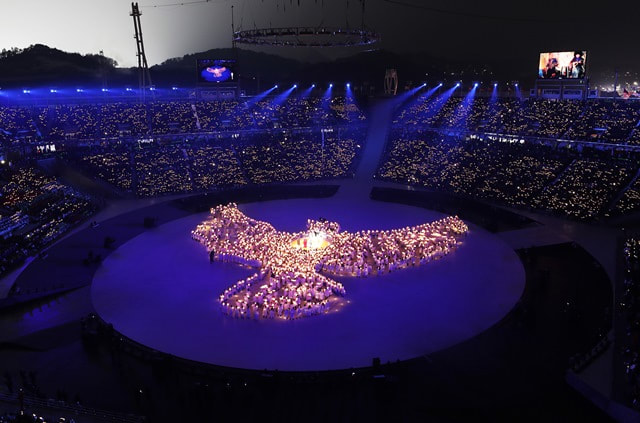 Olympic.org
Olympic.org By now most of the world has stopped caring about the panic that gripped Hawaii one Sunday last month for all of 38 minutes. The false missile alert after all was just that. No harm done. Americans have even managed to settle back into their comfort zones watching Korean American snowboarder Chloe Kim conquer the halfpipe at the PyeongChang Winter Olympics. In spite of a core message of peace and reunification an undercurrent of US and North Korean hostility continues to run below the surface. And while overtures of dialogue from both sides of the 38th parallel may have raised hopes since the Opening ceremony, harsh rhetoric could easily return when the Olympic flame is extinguished and the athletes return home.
OK. So where are we now?
First of all the Democratic People's Republic of Korea is a nuclear state. We need to get over it. Outside of the collapsing apartheid government of South Africa in 1989, NO nuclear power has ever unilaterally, much less voluntarily disarmed. And the Hawaiian chaos could have easily been misread by North Korean leaders as a cover for an attack by the US military. With little or no room for error and nothing to lose at that point, officials in Pyongyang might have easily opted for an immediate counterattack based on its limited, ground-based early warning detection assets, setting off a spiraling thermonuclear holocaust in a worst case.
The atomic age is replete with near nuclear catastrophes, and billions of lives still hang in the balance seven decades after the Trinity detonation. In a recent article in The New Yorker, Sidney D. Drell a groundbreaking researcher and physicist who served for nearly half a century as a top adviser to the United States government on military technology and arms control, considered it a miracle – “so far beyond my normal optimism” - that no other city since Nagasaki had been destroyed by a nuclear weapon. Given all the close calls and mistakes since then our species continues to exist on borrowed time.
It would seem that the time for talking, diplomatic dialogue, is long overdue.
The United States has appeared to endorse a closer post-Olympics engagement between South and North Korea with an eye to eventual US-North Korean talks, but has agreed with Seoul that sanctions must be intensified to push Pyongyang to negotiate an end to its nuclear weapons program. U.S. Vice President Pence said Washington would keep up its maximum pressure campaign against Pyongyang, but at the same time would be open to talks without pre-conditions.
Clearly, however, insisting that North Korea disarm is a non-starter. The Kim Jong Un regime, understandably, equates survival with nuclear weaponization.
In fact believing that further sanctions and Security Council pressure will break the DPRK commitment to the bomb is a risky naiveté. With no reasonable threshold anticipated in either case, the Trump administration might well take a lesson from the Richard Nixon template of normalizing relations with a future, legitimate atomic adversary. The nuclear rise of a bellicose outlier like “Red” China in 1972 demanded resolution. A time-line of deliberate negotiations - Track 2 interactions, followed by more open discussions - arguably eliminated that nuclear stress.
A Sino-Soviet dispute, coupled with China’s willingness to talk, certainly paved the way for Nixon, but that effort rewrote history. It started and concluded with dialogue, an option that should always be “on the table” but is rarely, if ever, a first consideration since war and military intervention have been the foreign policy solutions of choice for the 21st century.
The author of this post is Veterans For Peace Lifetime Member, Past VFP Board Secretary and Naval Aviation Veteran Gene Marx. He is also an active member of the CPL Jonathan Santos Memorial Veterans For Peace Chapter 111 and lives in Bellingham, Washington with his wife, Victoria.